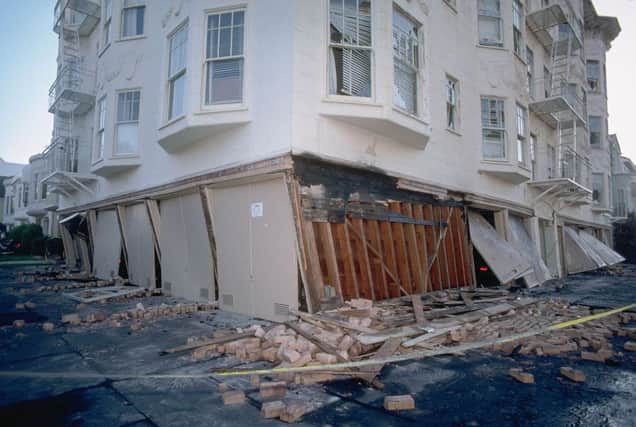Scots scientists develop earthquake-proof device to save buildings


Researchers at Heriot-Watt University say it will prevent the collapse and reducing the damage and residual drifts that can leave buildings uninhabitable.
Current European “earthquake-proof” buildings were designed to prevent collapse in the event of a strong earthquake.
Advertisement
Hide AdAdvertisement
Hide AdHowever researchers say they do not prevent extensive damage that is difficult to repair, or residual drifts. If buildings experience one or both of these factors, the cost of repairs can become prohibitive and demolition may be the only option.
Dr George Vasdravellis, assistant professor in structural engineering at the university in Edinburgh, and his team are adapting the design for taller buildings.
He said: “We have developed an innovative steel frame that could achieve high seismic resilience, structural and non-structural damage control, and minimise residual deformations.
“The system makes use of ‘sacrificial devices’ made of stainless steel material. The devices are placed strategically in the structure, so that they are the only damaged components during earthquake loading.
“In the aftermath of a strong seismic event, they can be easily replaced with new ones, so that the building can return to its usual occupation very quickly.”
Through experiments the team found that its system had “negligible” residual drifts compared to conventional building designs, which experienced drifts that were four to five times larger.
The ability to make it commercially viable for architects and construction firms was the aim of the research.
Dr Vasdravellis added: “In Greece and Italy, we’ve watched new areas become seismic, where previously there had been little activity. We must also consider, unfortunately, the impact of explosions or other attacks on buildings that could impose extreme loading conditions.
Advertisement
Hide AdAdvertisement
Hide Ad“The sacrificial devices will mitigate progressive collapse due to explosions, or other extreme events, that result in the loss of one or more columns in the building. Therefore, we are further developing the system for multi-hazard mitigation.
“It is not enough to ‘earthquake-proof’ new buildings; we need simple, effective devices like this that can protect our existing built environment and heritage, minimising damage and costs in the event of a seismic event or blast.”
Dr Vasdravellis was awarded £140,000 by the European Commission for the next stage of his research into earthquake engineering.